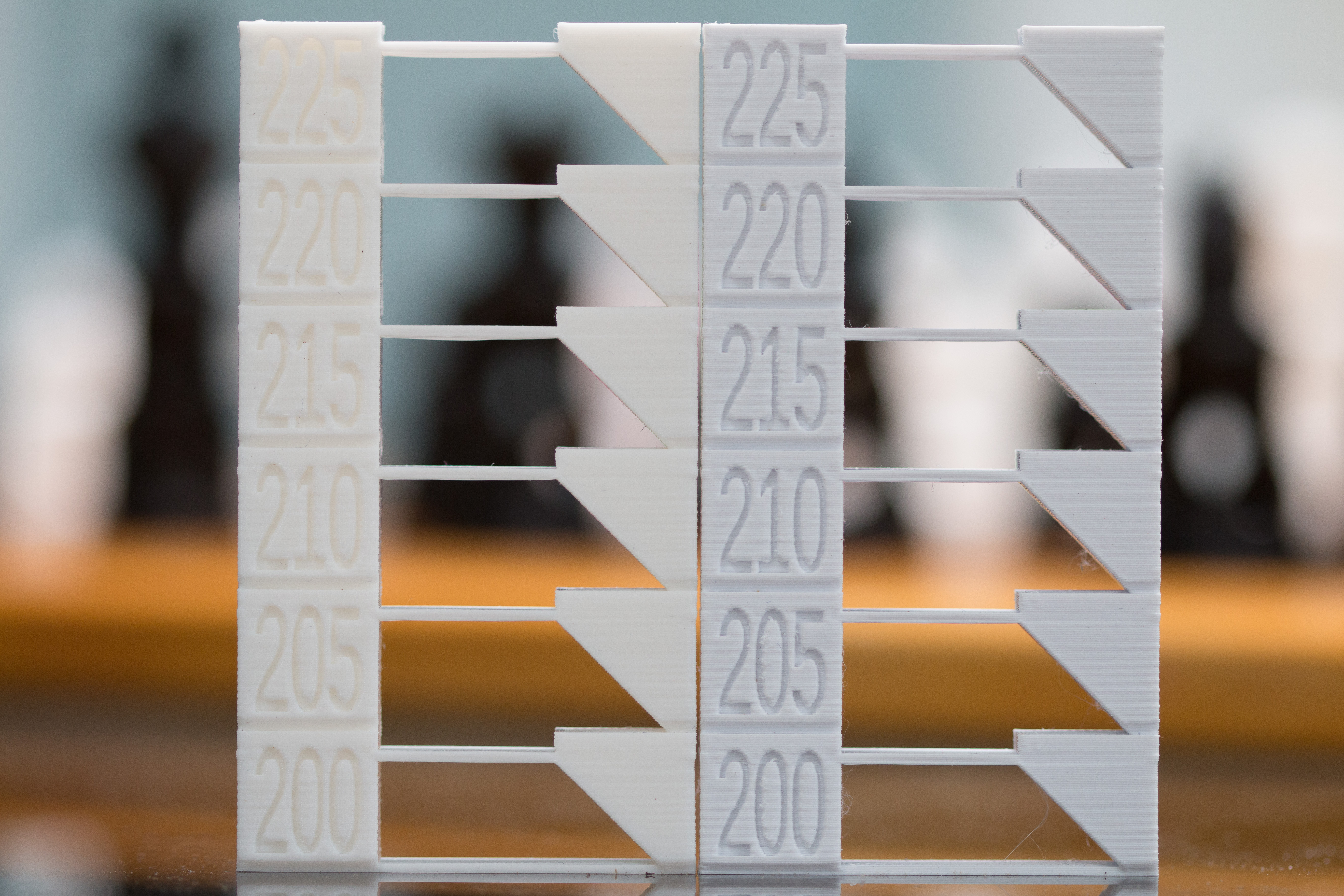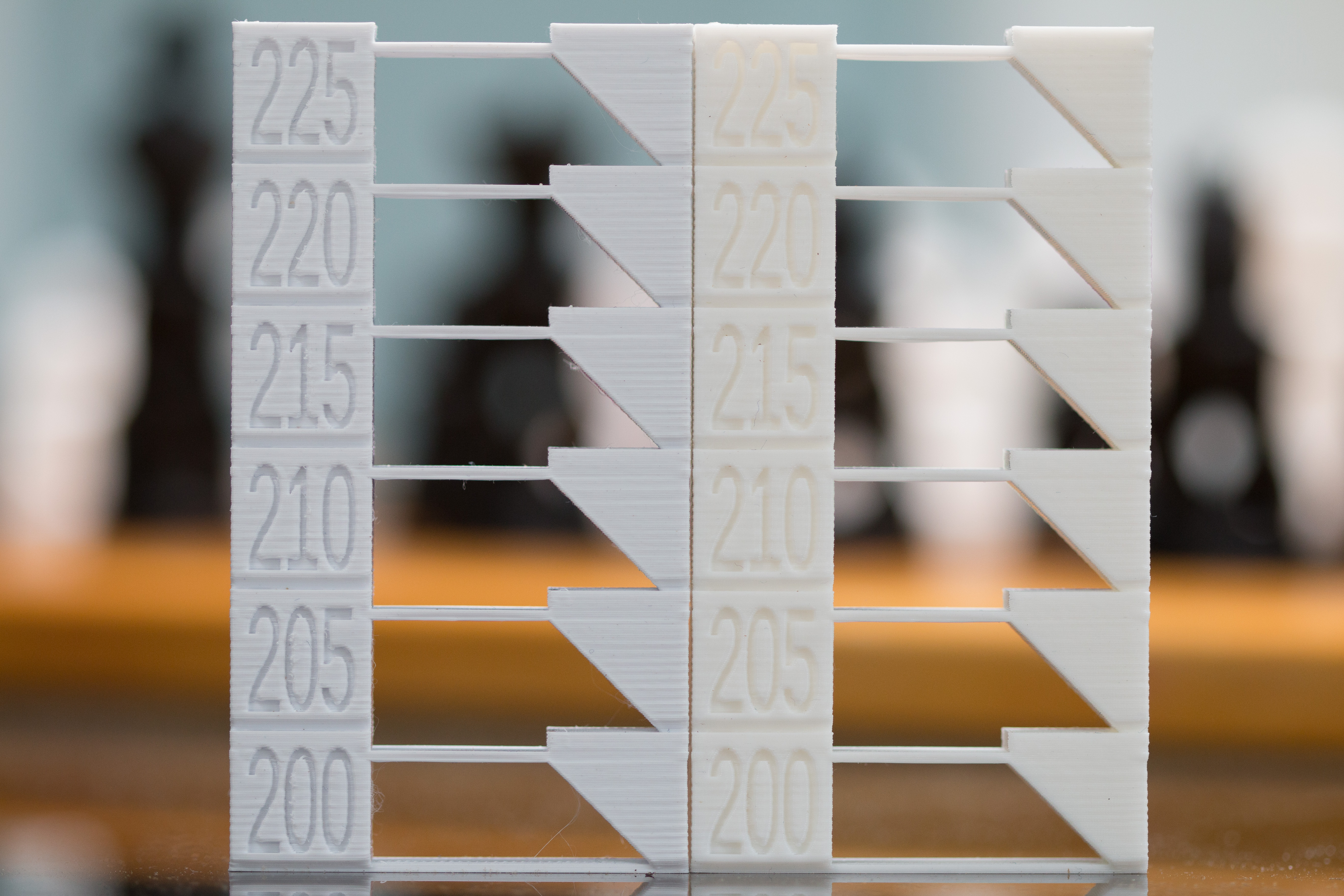Two different materials, very different results
I recently bought a roll of eSun PLA+ in white. I've been using the same filament in black with good success. I also have what remains of a roll of AIO Robotics PLA in white,
https://www.amazon.com/gp/product/B01EKEMFQS/ref=oh_aui_detailpage_o00_s00?ie=UTF8&psc=1
When I first printed using the eSun white, I found that the surfaces were very "rough" compared to what I'm used to. And although it's hard to compare black with white, I felt that this was a problem for the white color only.
I decided to print a temperature tower to help analyze the differences. The images below show these two filaments side by side. Aside from the color difference (the AIO is the yellower color) there were other distinct differences. The AIO is more translucent which may help disguise some of the roughness but the basic difference is that the eSun doesn't look as melted together and is definitely rougher. This is confirmed when handling the objects as well.
Dimensionally, they are extremely close to each other so I don't think it's an extrusion difference.
Since none of the temperatures show any increase in smoothness that I can see, what other slicer settings would enhance smoothness? Or, am I just better off with a different filament?
Thanks

